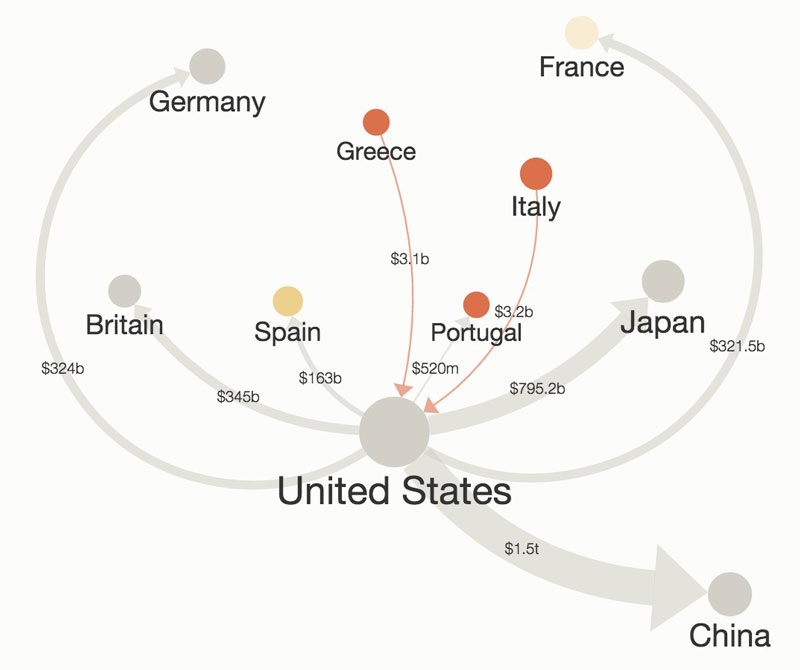Sometimes you want a little more context than the default labels provide. For example, you might want to pull in location, display the strength of a connection, or show an element's rank. With sensitive data you may want to turn off labels entirely or replace the person's name with their organization or role.
Label templates, a new feature we're releasing today, allow you to easily accomplish any of those in seconds:
connection {
label: "{{amount owed}}";
}
And voila!

You can easily customize the label in the advanced tab of perspectives. Let's look at a few examples:
Turning off labels
The easiest way to do this is through the @settings block:
@settings {
label: none;
}
If you just wanted to turn off labels for elements with type "person":
person {
label: none;
}
Pulling in attributes
The general format for pulling in an attribute is {{attribute name}}. Let's say we wanted to include the "location" attribute in place of the default label for elements:
@settings {
element-label: "{{location}}";
}
Or, you may want to include "location" in addition to the element label. In this case, we can do a bit of extra magic by using a double space to cause a line break and include the location below the default label:
@settings {
element-label: "{{label}} {{location}}";
}
Adding custom text
As you probably already guessed, you're not limited to just attribute values for the labels. Maybe you want to make it explicit what the location value represents:
@settings {
element-label: "Born in {{location}}";
}
Or maybe you want to override the default label for an element:
#john-doe {
label: "Johnny Boy";
}
Hope that's enough to get you started. We're really excited about the possibilities label templates open up and the massive amount of time they can save. Enjoy!